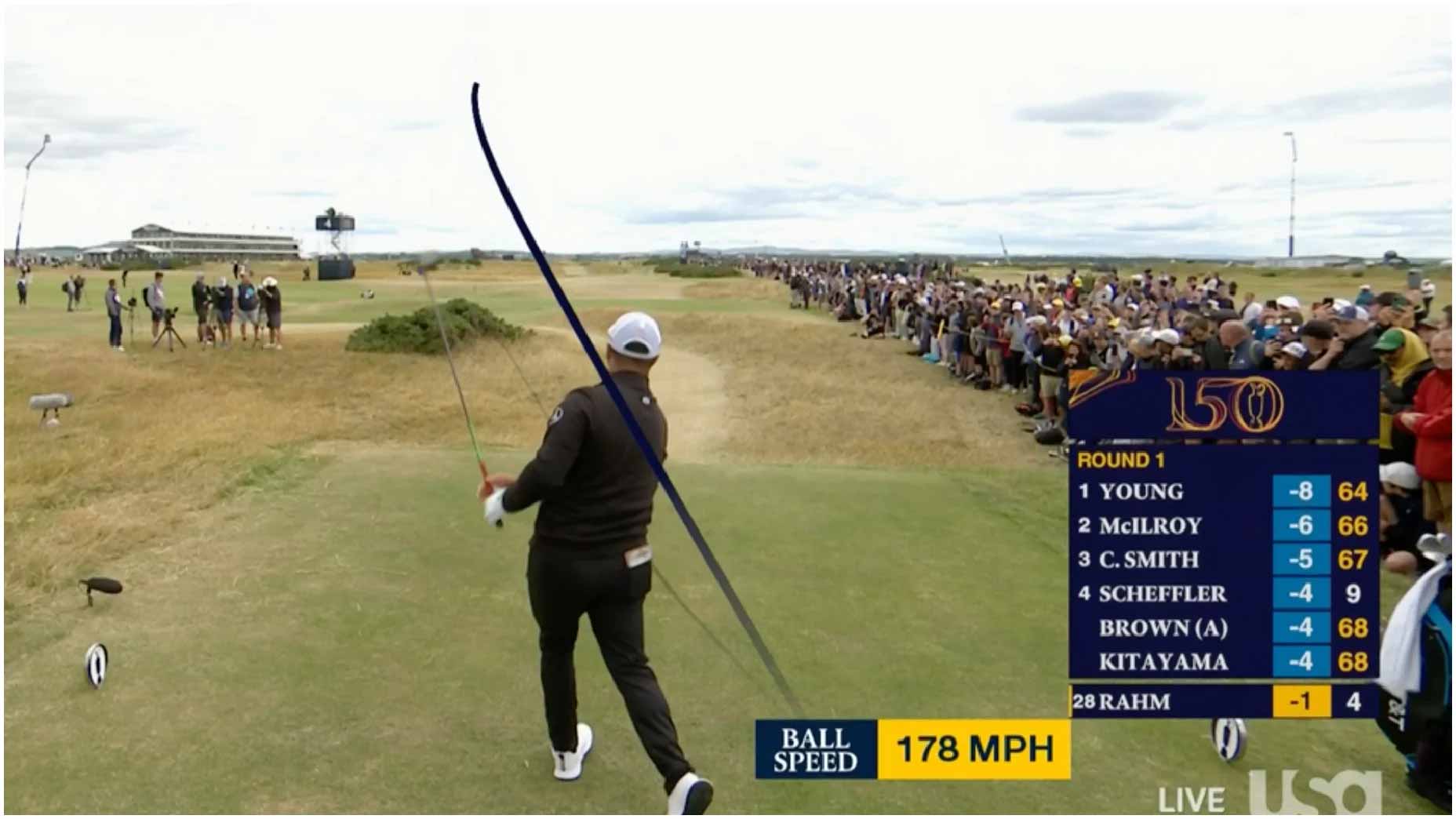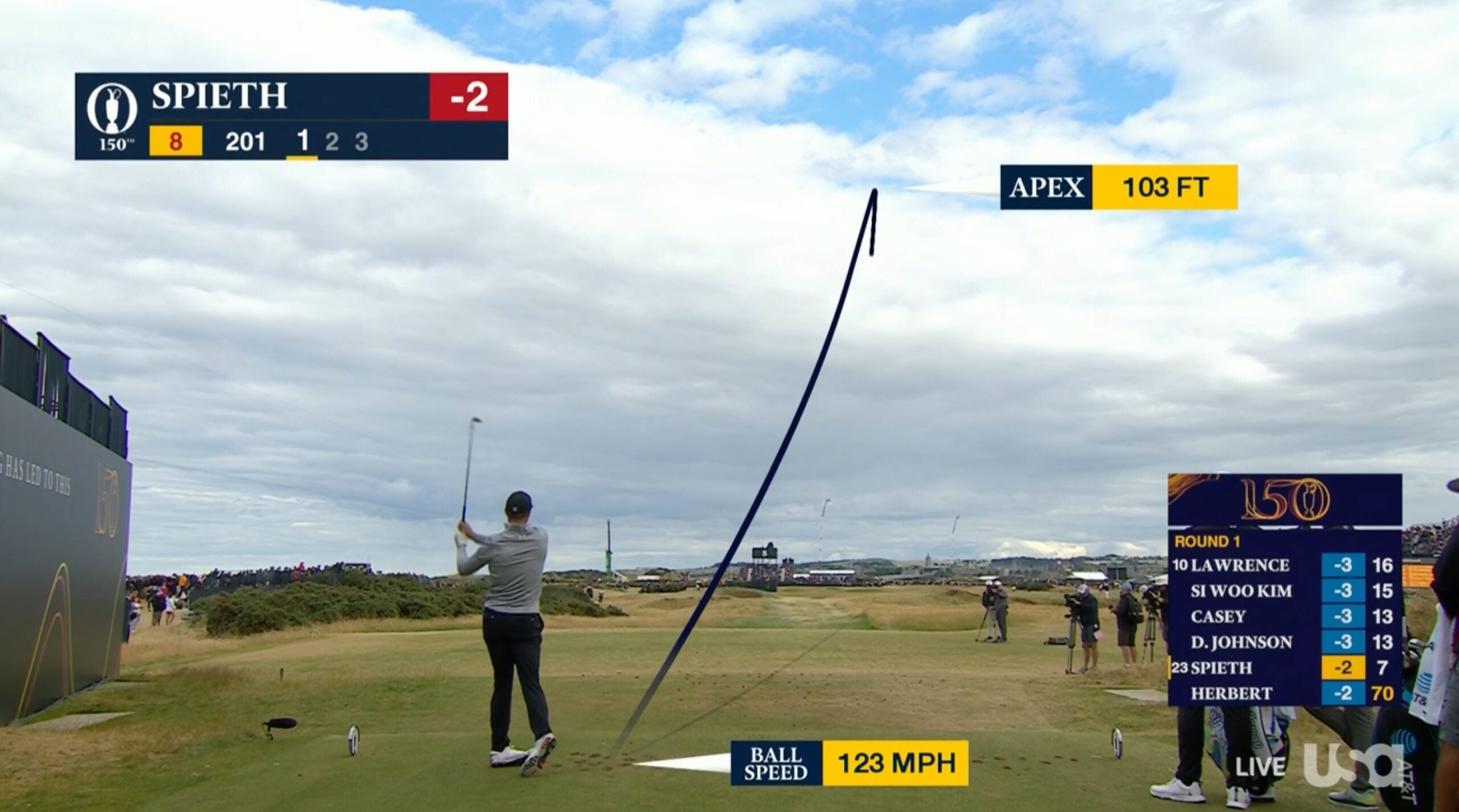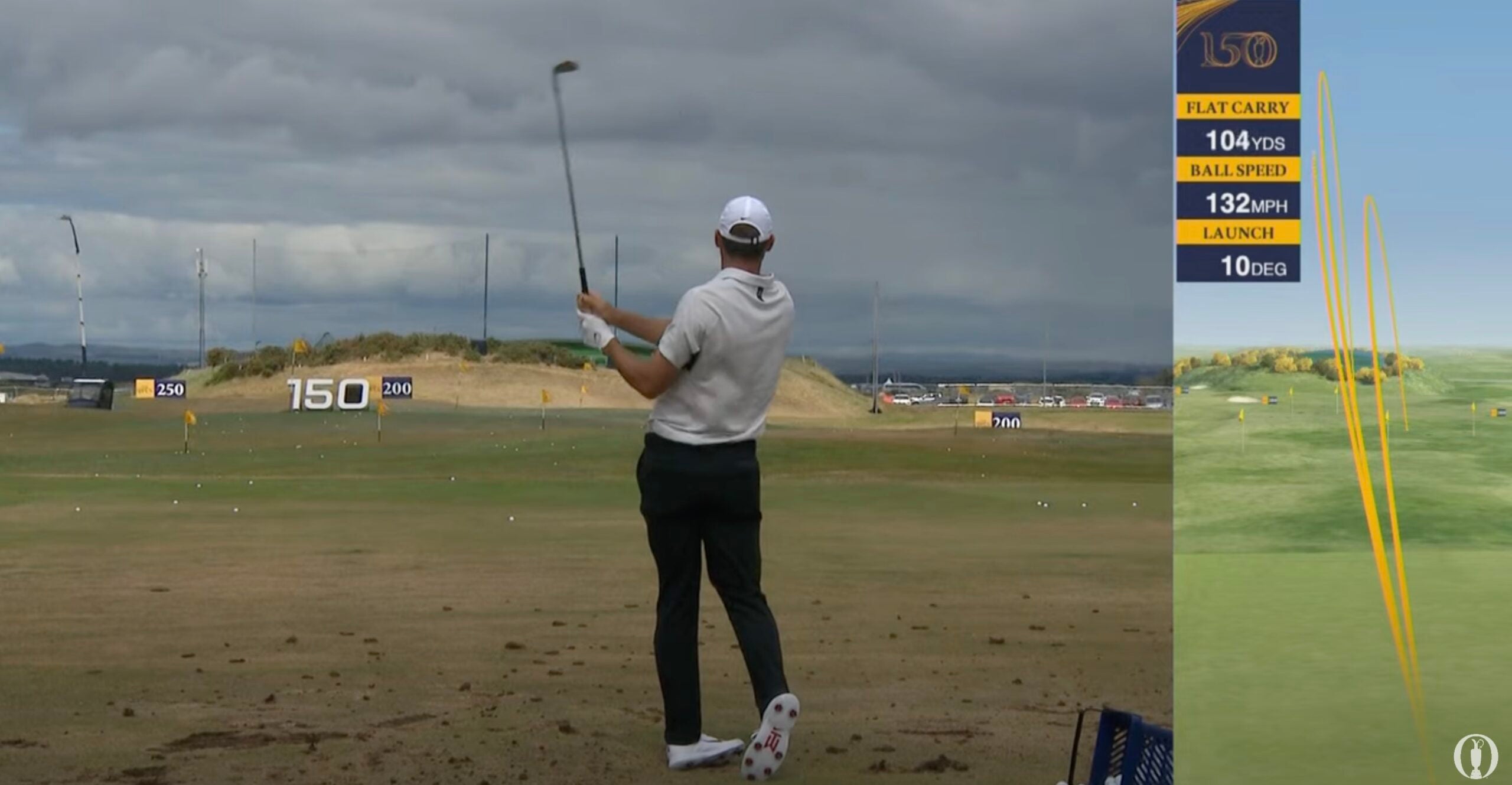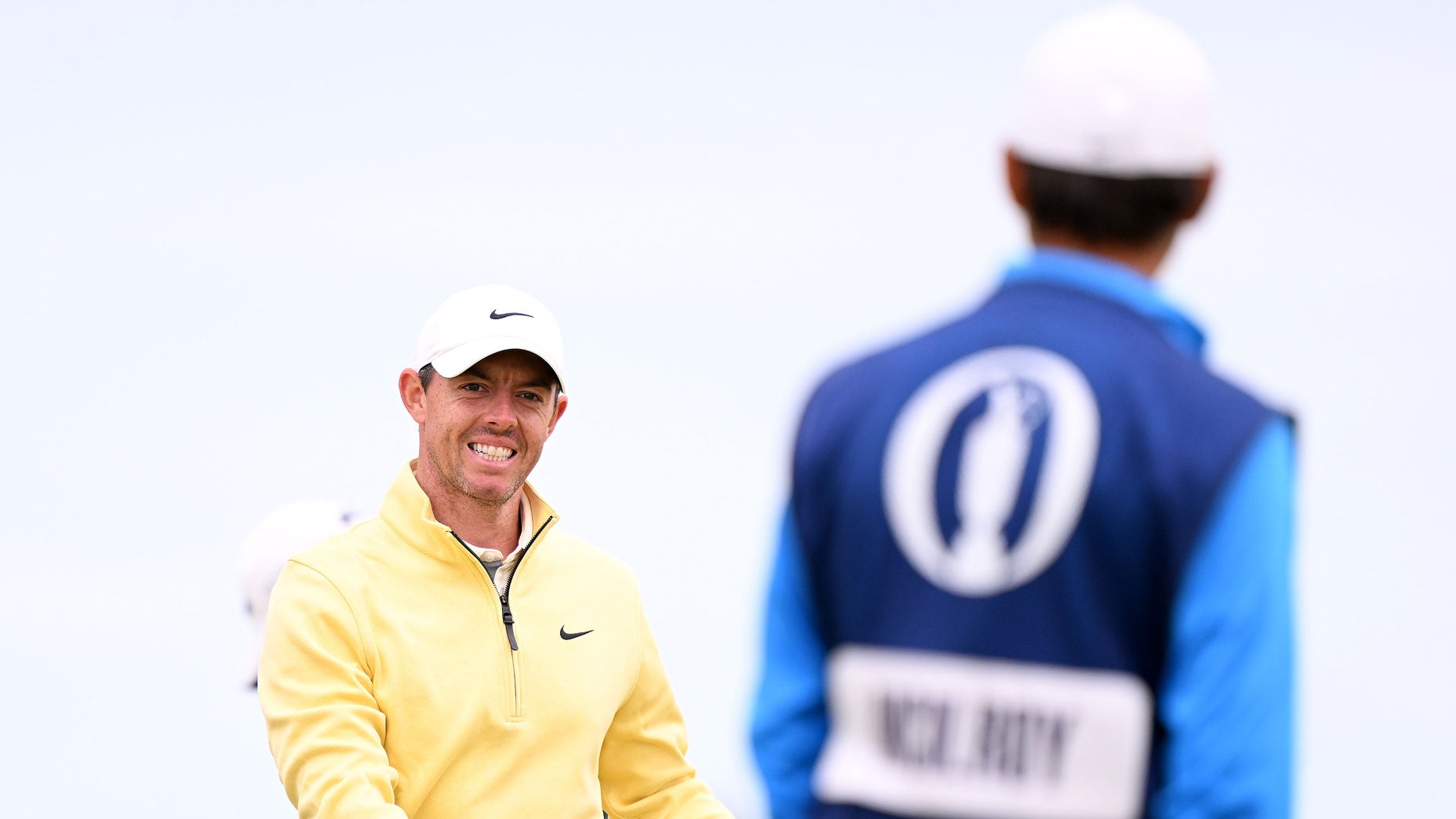
Jon Rahm hits a flat cut during the opening round of the Open at St. Andrews.
USA
When faced with the task of striking out a batter, a pitcher will call upon a library of different pitches they’ve spent years cultivating. You can’t truly appreciate a pitcher’s ability without first understanding how how many pitches they have at their disposal, the quality of each, and the order in which they’re deployed.
I sometimes wonder why fans don’t speak about golfers the same way. Players are constantly varying the shot they’re hitting: Combining high and low, left or right. We recognize that fact generally, sure, but we rarely dig down into the specifics.
I’d like to change that! Especially this week, when players are hitting so many different new, interesting and unusual shots around the Old Course at St Andrews. But there’s one that keeps bubbling up above all others: A flat cut.
Why the flat cut is key this week
All of our market picks are independently selected and curated by the editorial team. If you buy a linked product, GOLF.COM may earn a fee. Pricing may vary.
Swing Evaluation or Club Fitting for $125
60-minute fact-based swing evaluation with a certified coach Begin your GOLFTEC journey today!
The wind is blowing north west, according to the official forecast, and gusting close to 20 mph, which means it’s moving from left-to-right on a large number of holes. Generally speaking, pros will try to work the ball against the wind like this. In other words, hit a draw against a left-to-right fade wind so the two things neutralize each other, and the ball flies relatively straight.
Pros are still doing that this week at times, but the problem with hitting a draw is that it’ll come off the clubface with less backspin, and travel a little further. When the ground is as firm as it is at St. Andrews right now, fighting that kind of fire with more fire is a potentially dicey proposition.
So instead, players are hitting more flat cuts: Shots that involve swinging a little softer — sometimes you’ll see players use an abbreviated finish — which takes some initial spin off the golf ball. If they’re hitting the ball off the tee, they’ll generally tee it a little lower, too.
The effect is a ball that’ll start straight, but as it rises, the wind starts drifting the ball to the right. Rather than fighting against the wind, players are using it, like a surfer riding a wave.
“I’m just trying to hit a nice, neutral shot and let the wind take it a little bit,” Rory described yesterday.
It’ll take more than that to win the Open this week, of course. But it will be crucial at various points this week, and something to look for from the comfort of our couches at home.


The fun thing about the driving range at St. Andrews is that players hit into the same direction as a majority of the holes, so you’ll see players practice that shot often on the range. The ball starts straight, drifts right, and lands from a higher, softer angle than a draw potentially would.


How to hit the flat cut
That’s why pros are opting for it. As for how to hit one yourself? We’ll let our friends GOLFTEC and its GOLF Top 100 Teacher Nick Clearwater, chatting with English golfing legend Laura Davies, take it away. She suggests making three small adjustments:
- Aim your feet to the left
- Tee the ball slightly lower
- Swing along your foot line
You can book your own lesson at GOLFTEC right here:









